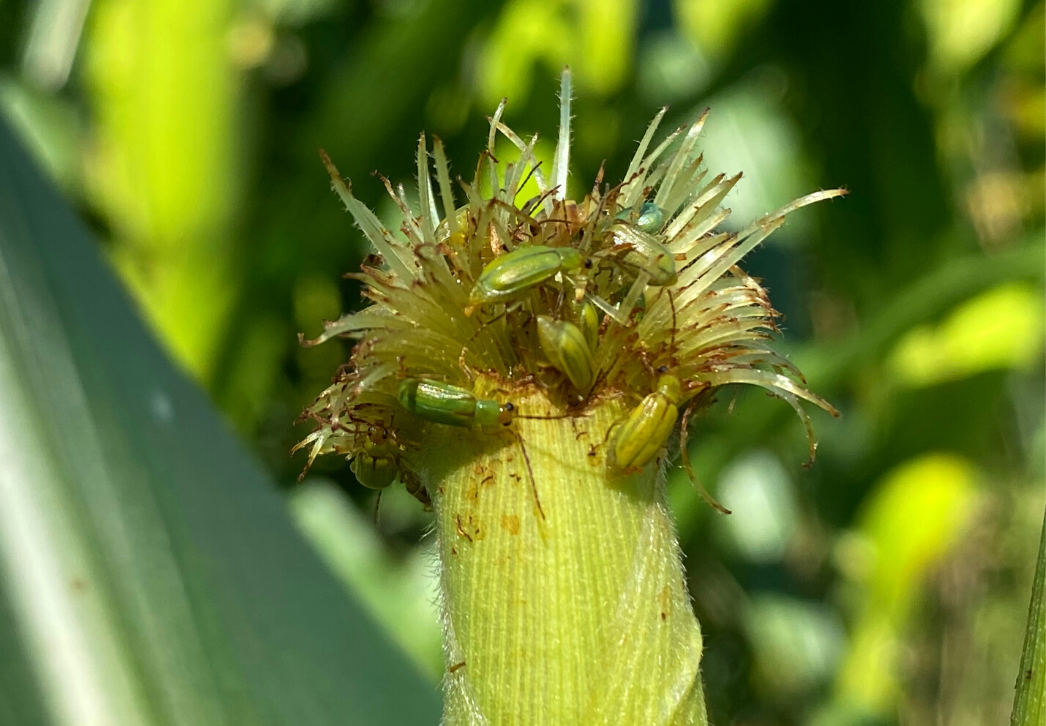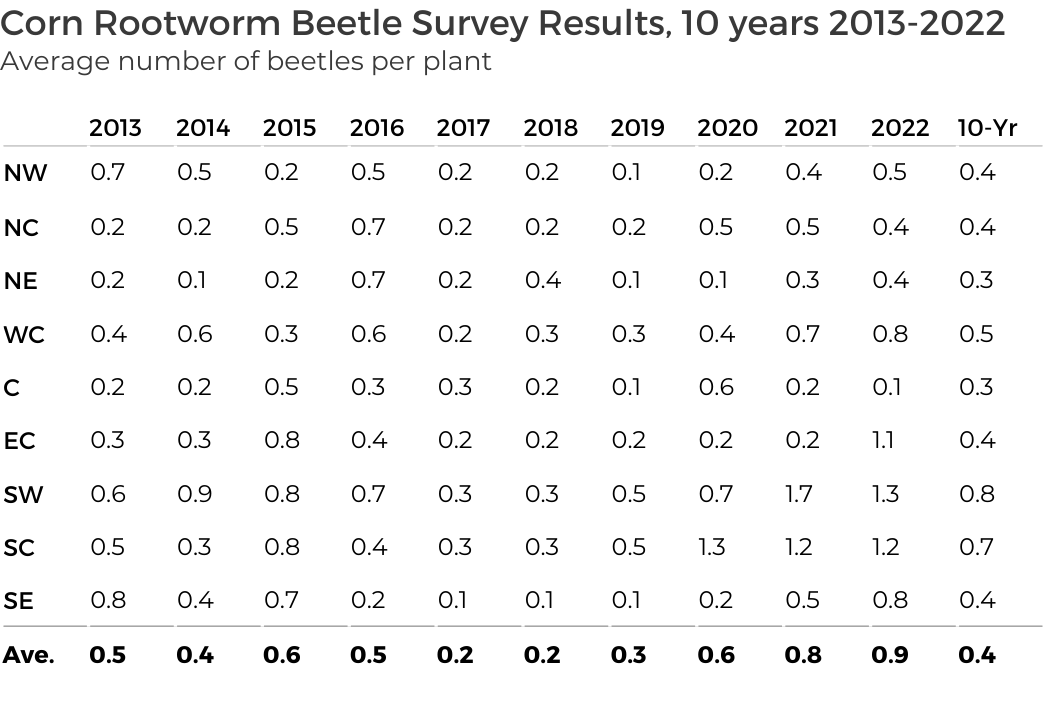|
|
The Pest Survey Program at DATCP continued to monitor agricultural fields during the 2022 growing season to collect data on the leading economic pests of concern to Wisconsin crop producers, as it has done for more than a century. Survey work was conducted from April through October and spanned across 62 of the state’s 72 counties. In addition to assessing the abundance and distribution of the state’s most damaging crop pests, our field specialists also surveyed for several invasive priority pests that are currently not known to occur in Wisconsin, such as the soybean gall midge.
This end-of-year issue of Field Notes summarizes the results of our annual corn and soybean pest surveys. Another edition featuring results of our forest and nursery pest surveys will be issued next week. The information provided below is based on data collected by DATCP’s own field staff and by dedicated volunteers who report weekly counts to our insect trapping networks. This year, 70 cooperators participated in the Pest Survey Program’s monitoring networks. Our sincerest thank you to the agronomists, apple growers, farmers, crop consultants, gardeners, UW-Extension staff, vegetable growers, and others who contributed their time and expertise to support our efforts in 2022.
__________________________________
  Northern corn rootworm beetles | K. Hamilton DATCP
 
|
|
Beetle populations remained high across much of the southern half of Wisconsin for the second year in a row. The annual survey in August found a state average of 0.9 beetle per plant, an increase from 0.8 per plant in 2021 and the highest average in more than a decade (since 2008). The heaviest adult rootworm pressure was recorded in the southwest counties, where the district average was well above-threshold at 1.3 beetles per plant. Counts were also relatively high in the south-central and east-central regions, at 1.2 and 1.1 beetle per plant, respectively. Corn fields with populations above the 0.75 beetle-per-plant economic threshold comprised 33% of this year’s 229 sites.
Based on the high adult corn rootworm pressure observed in August, southern and western Wisconsin corn producers have been advised to closely review their rootworm management plans for 2023 and consider crop rotation if practical. Growers opting for a rootworm trait package for root protection are reminded that planting continuous corn with the same trait should be avoided. |
|
 __________________________________
|
|
Moth counts in 2022 were the highest recorded in 18 years of surveys. The annual trapping program from June-August registered an average of 133 moths per trap (4,804 moths in 36 traps), surpassing the previous survey record of 117 moths per trap (5,614 moths in 48 traps) set in 2021. The highest individual cumulative count for the 10-week monitoring period was 437 moths in a Columbia County trap. This season’s relatively large flight produced heavy larval infestations in scattered corn fields in the west-central and central counties in August and September. |
|
 __________________________________
|
|
Larval populations were extremely low again in 2022. The state average count in 229 corn fields sampled this fall was 0.05 borer per plant (or five borers per 100 corn stalks), which is only marginally higher than the 2021 survey average of 0.04 borer per plant and the all-time low average of 0.01 per plant recorded in 2018 and 2019. Six of the state’s agricultural districts showed averages less than or equal to last year’s levels, while negligible increases were noted in the south-central, east-central and northwest areas. Larvae were absent from 88% of the fields sampled in September and October.
The near-record low number of corn borers observed again this year reflects the continued prevalence of Bt corn, which currently accounts for 80% of the state’s corn acres. |
|
__________________________________ |
|
The late-season corn earworm monitoring program captured a total of 4,173 moths in 13 traps, with the largest flights recorded during the week of September 1-7. The pheromone trap location with this season’s highest cumulative catch was Ripon in Fond du Lac County, where 1,395 moths (1/3 of the 2022 total moth catch) were collected. Compared to 2021 when 11,837 moths were collected in 16 traps, this year’s total count was nearly three times lower and larvae were also less common during fall corn surveys. Corn earworm caterpillars were observed at only 2% of corn sites sampled in September and October. |
|
 __________________________________
|
|
An emerging pest of Midwestern soybeans, the soybean gall midge (SGM) was not found in Wisconsin in 2022. In just the last five years, populations have been confirmed in 155 counties in Iowa, Minnesota, Missouri, Nebraska, and South Dakota, including 15 new counties this year. Larvae of the SGM, a member of the Hessian fly family (Cecidomyiidae), feed internally at the base of soybean stems and cause stem discoloration. Infested plants break near the ground and the orange or white maggots can be found inside.
DATCP is participating in a multi-state effort by the North Central Soybean Research Program to understand the regional distribution and impact of SGM. To date, SGM has not been observed or reported in Wisconsin. The highest concentration of infested fields has been in eastern Nebraska and the closest documented infestations are in central Minnesota. |
|
 __________________________________
|
|
|
Soybean aphids | K. Hamilton DATCP
 
|
|
Populations recorded during the annual survey were very low. Ninety-nine percent of the 157 fields sampled from July 11-August 9 had average counts below 50 aphids per plant, 1% had 51-100 per plant, and no surveyed fields showed above-threshold populations of 250 or more aphids per plant. The 2022 state average count was just six aphids per plant, the same average recorded in 2021. For comparison, the 2020 survey found an average of 15 aphids per plant and the all-time record-low average of five aphids per plant was recorded in 2019.
Results of this season’s effort suggest that aphid pressure was generally low to moderate in 2021-2022, and no soybean field sampled met treatment guidelines during the survey timeframe. |
|
__________________________________ |
|
|
|